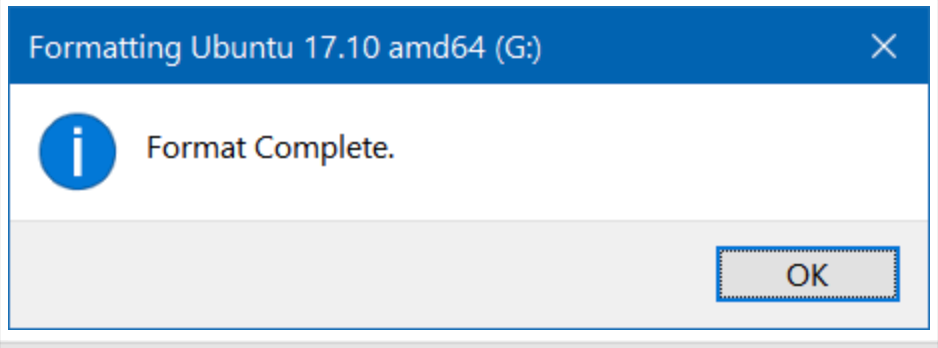Specifying the filesystem used by your USB drive
This guide covers how to make sure your local or USB drive is using the correct filesystem, and how to reformat it (change it) to a different filesystem.
What is a filesystem?
While when you browse the contents of a disk, CD, or USB, you see files and folders, that information must be encoded into a sequence of zeros and ones in order to be stored on a physical disk. There are a number of different formats that can be used, depending on the purpose and platform – for example, Windows PCs use one format while Macs and iPhones use another.
The two primary filesystems in use in the Windows world are FAT32 and NTFS. While most Windows PCs use NTFS for local disks, a USB drive can be formatted as either of NTFS or FAT32. Almost all bootable software requires that the USB drive be formatted as FAT32 to function correctly.
Identifying the current filesystem
Follow the instructions in our companion article to find out what filesystem your USB is currently using.
Formatting a drive to a new filesystem
To format a drive to a new filesystem such as FAT32, NTFS simply follow the instruction below.
Make sure the USB you want to format is securely plugged in and shows up under “My Computer” or “This PC” (depending on the version of Windows you are running):

Right-click the USB and choose “Format”:
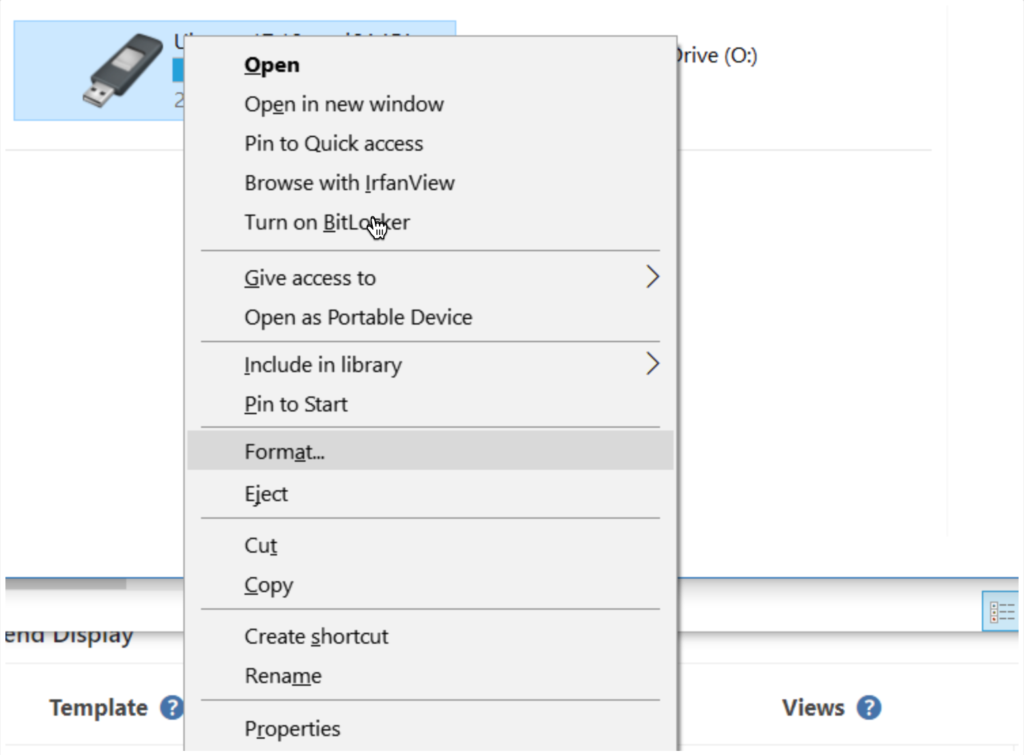
You should see a “Format” dialog pop up:
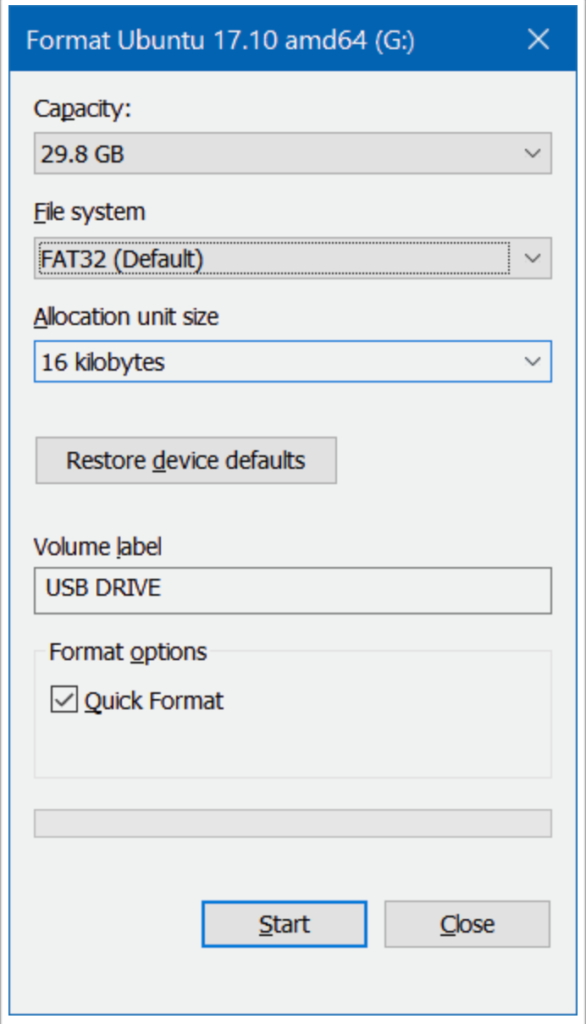
Select the filesystem you wish to use for this drive and then click “Start” to continue:
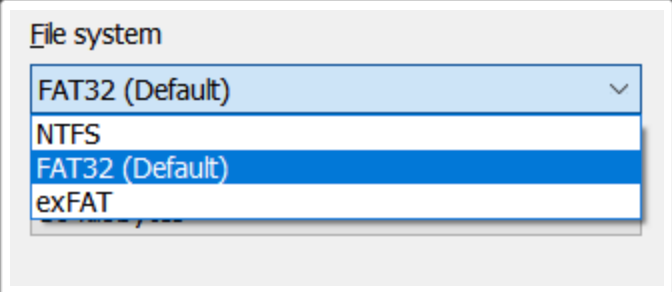
All data currently on the drive will be lost past this step. Make sure you have backed up your files before continuing. Once you’re ready, press “OK” at the confirmation dialog to begin the process:
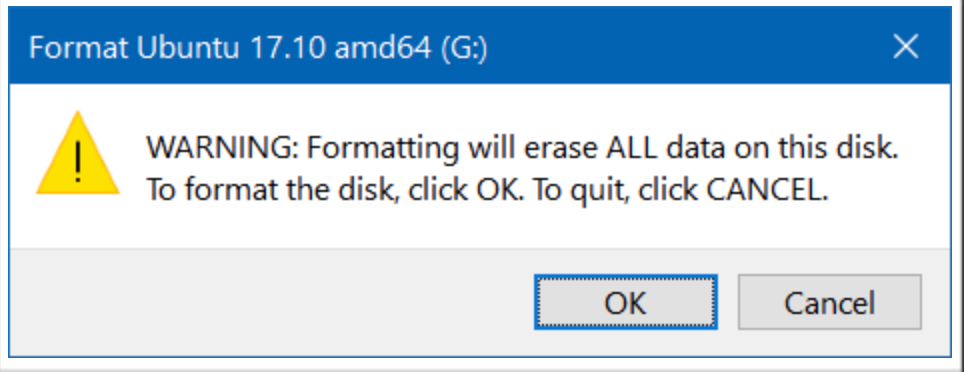
The process shouldn’t take long, and once it’s done you’ll see a dialog letting you know the procedure completed:
